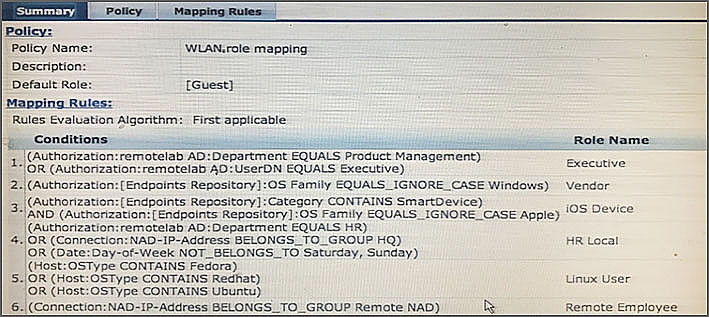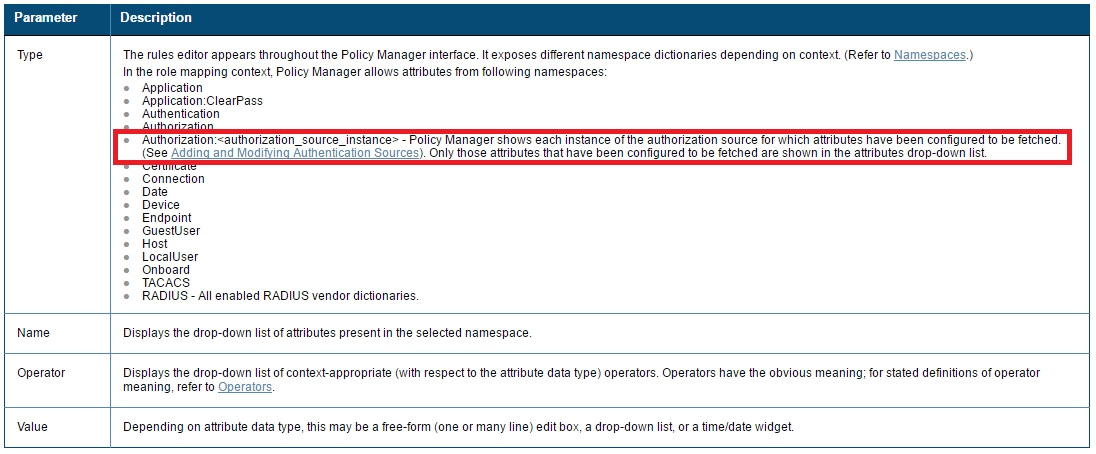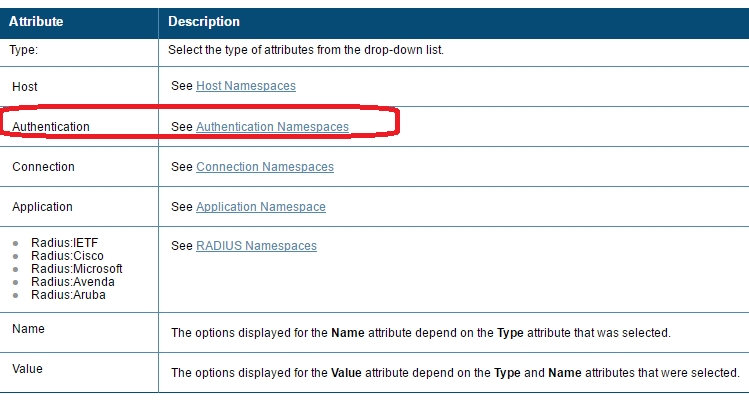

Refer to the exhibit.
An AD user’s department attribute value is configured as "QA". The user authenticates from a laptop running MAC OS X.
Which role is assigned to the user in ClearPass?
Correct Answer:
C
🗳️
None of the Listed Role Name conditions are met.
Refer to the exhibit.
Based on the Attribute configuration shown, which statement accurately describes the status of attribute values?
Correct Answer:
D
🗳️
Which components can use Active Directory authorization attributes for the decision-making process? (Select two.)
Correct Answer:
CD
🗳️
C: Role Mappings Page - Rules Editor Page Parameters
D: Enforcement Policy Attributes tab Parameters
References:
http://www.arubanetworks.com/techdocs/ClearPass/Aruba_CPPMOnlineHelp/Content/CPPM_UserGuide/identity/RoleMappingPolicies.html http://www.arubanetworks.com/techdocs/ClearPass/Aruba_CPPMOnlineHelp/Content/CPPM_UserGuide/PolicySim/PS_Enforcement_Policy.htm
Refer to the exhibit.
Based on the Authentication sources configuration shown, which statement accurately describes the outcome if the user is not found?
Correct Answer:
D
🗳️
Policy Manager looks for the device or user by executing the first filter associated with the authentication source.
After the device or user is found, Policy Manager then authenticates this entity against this authentication source. The flow is outlined below:
* On successful authentication, Policy Manager moves on to the next stage of policy evaluation, which collects role mapping attributes from the authorization sources.
* Where no authentication source is specified (for example, for unmanageable devices), Policy Manager passes the request to the next configured policy component for this service.
* If Policy Manager does not find the connecting entity in any of the configured authentication sources, it rejects the request.
References: ClearPass Policy Manager 6.5 User Guide (October 2015), page 134 https://community.arubanetworks.com/aruba/attachments/aruba/SoftwareUserReferenceGuides/52/1/ClearPass%20Policy%20Manager%206.5%20User%
20Guide.pdf